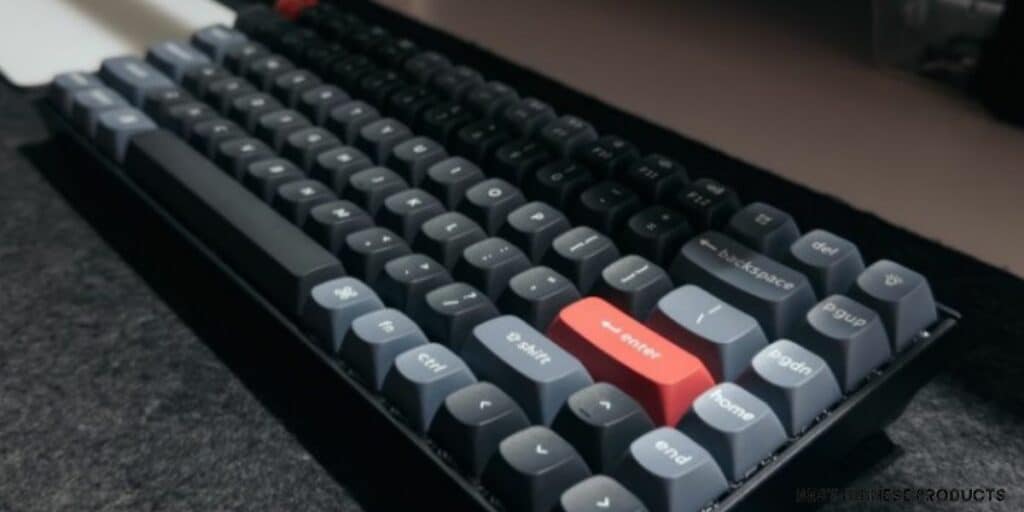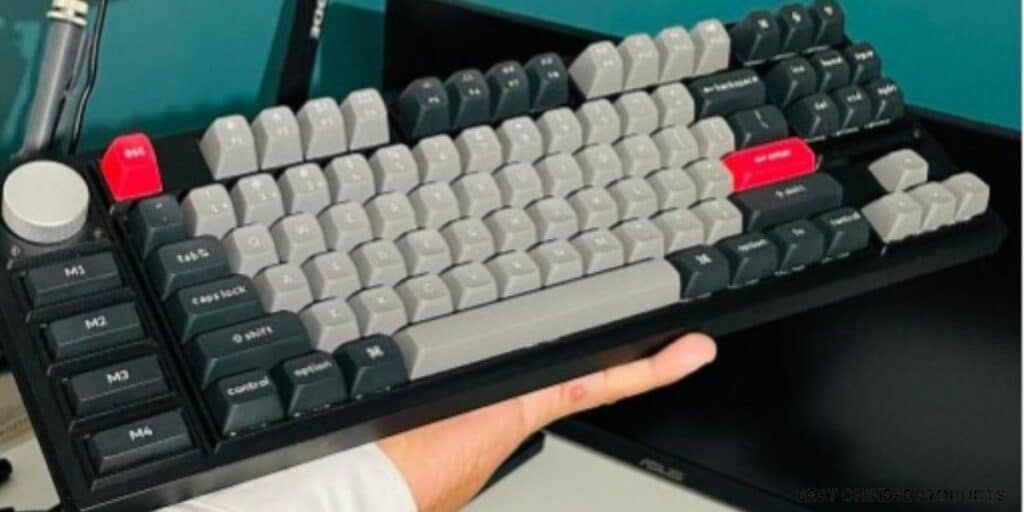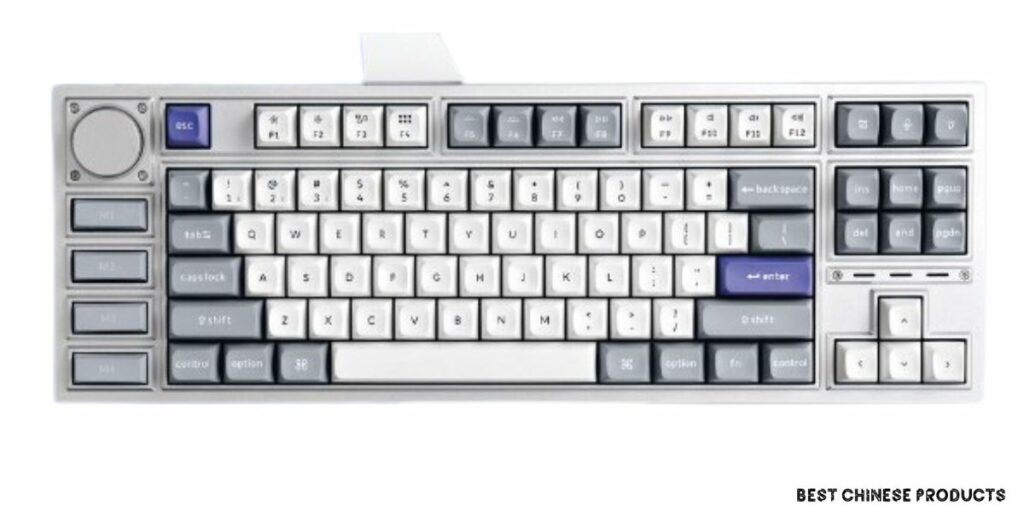If you go on Amazon or AliExpress and search for mechanical keyboards, the most popular brand that appears in the search results is Keychron.
This hardware manufacturer has been developing customizable mechanical keyboards for years and they’ve been successfully taking over the market.
But is Keychron a Chinese brand and if so where are Keychron keyboards manufactured?
This guide will uncover all you need to know about Keychron including who started the brand, the kinds of keyboards they make, the devices these keyboards are compatible with and more.
Read on to learn more about the brand – Keychron.
Also Made: Is JBL a Chinese Brand? Where are JBL Products Made?
Is Keychron A Chinese Brand?
Keychron, recognized for its high-quality mechanical keyboards, was established in 2017 by Taiwanese entrepreneur Nick Xu.
While the brand has its origins in Taiwan, its products are manufactured in China, a common practice among electronics companies due to cost-effective production and supply chain advantages.
Keychron’s design process emphasizes understanding user needs, iterative design, and continuous development. Contrary to misconceptions, Keychron is not a Chinese brand but a Taiwanese brand with manufacturing operations in China.
What is Keycron?

Keychron is a relatively new brand in the mechanical keyboard market. It was founded in 2017 by Nick Xu, a Taiwanese entrepreneur.
The company’s goal was to provide high-quality mechanical keyboards that combine aesthetics, functionality, and versatility.
Keychron gained attention and popularity through a successful crowdfunding campaign on Kickstarter for its first product, the Keychron K1 mechanical keyboard.
The K1 was marketed as an ultra-slim wireless mechanical keyboard, featuring a sleek design and compatibility with multiple devices. The campaign was well-received, surpassing its funding goal and attracting a significant number of backers.
Following the success of the Keychron K1, the company continued to expand its product lineup. They introduced more models, such as the Keychron K2, K4, K6, and K8, each catering to different preferences and needs of mechanical keyboard users.
Keychron keyboards are known for their wireless capabilities, compact sizes, and compatibility with various operating systems, including Windows, macOS, and Linux.
Keychron has gained a strong following among mechanical keyboard enthusiasts, professionals, and gamers who value the combination of aesthetics, functionality, and wireless convenience.
The brand has continued to release new models and improve existing ones based on user feedback and demands.
Where are Keychron Keyboards Manufactured?
Keychron keyboards are manufactured in China. While the brand originated in Taiwan, Keychron has chosen to manufacture its products in China.
This is a common practice for many consumer electronics companies due to its cost-effective manufacturing capabilities and supply chain infrastructure.
As for distribution, Keychron sells its keyboards worldwide through various channels. Initially, Keychron gained attention and support through crowdfunding platforms like Kickstarter and Indiegogo.
These campaigns allowed the brand to reach a global audience and secure initial funding for production.
Following the crowdfunding campaigns, Keychron established its own online store where customers can directly purchase keyboards and accessories. The official Keychron website offers international shipping to many countries.
Keychron keyboards are also available on popular e-commerce platforms like Amazon, where they have established dedicated storefronts. This provides customers with additional options for purchasing their preferred Keychron model.
Keychron has partnered with authorized distributors and resellers in different regions to expand its reach and make its products more accessible to customers.
These distributors and resellers may operate physical stores or online platforms specific to their respective markets.
Keychron has adopted a global approach to distribution, ensuring that customers worldwide have the opportunity to purchase their keyboards through various channels, including the official online store, e-commerce platforms, and authorized resellers.
How does Keychron design and develop their products?
Keychron prioritizes product design and development to create mechanical keyboards that meet the needs and preferences of their target audience.

Identifying User Needs: Keychron starts by understanding the needs and desires of mechanical keyboard users.
This involves conducting market research, gathering customer feedback, and staying connected with the keyboard enthusiast community.
They aim to identify gaps in the market and areas where they can provide innovative solutions.
Conceptualization: Based on user needs and market research, Keychron begins the conceptualization phase.
They brainstorm ideas, explore different design possibilities, and envision the key features and functionalities of their keyboards.
This stage involves considering factors such as keyboard layout, form factor, keycap options, switch options, wireless capabilities, and compatibility with different operating systems.

Prototyping: Once the initial concepts are developed, Keychron moves on to prototyping. They create physical or virtual prototypes to test and evaluate the design, ergonomics, and overall user experience.
Prototyping allows them to gather feedback, make necessary adjustments, and ensure the keyboards meet their quality standards.
Iterative Design Process: Keychron employs an iterative design process, which means they continuously refine and improve their keyboard designs based on feedback and testing.
They take into account user feedback, reviews, and suggestions to make adjustments to the product features, aesthetics, and functionality.
Manufacturing and Quality Control: Once the design is finalized, Keychron moves into the manufacturing phase.
They work with their manufacturing partners in China to produce the keyboards. Keychron maintains quality control measures throughout the manufacturing process to ensure that each keyboard meets their standards.

User Testing and Feedback: Keychron encourages user testing and seeks feedback from customers who have purchased and used their keyboards.
This feedback helps them identify any potential issues, gather insights on user experiences, and make further improvements if needed.
Ongoing Development: Keychron continues to develop new models and improve existing ones based on user feedback and market demands.
They may introduce new features, layouts, or variations to cater to specific user preferences or industry trends.
Keychron’s focus on user-centric design and its iterative development process helps them create keyboards that combine aesthetics, functionality, and versatility while meeting the evolving needs of mechanical keyboard enthusiasts and professionals.
How does Keychron fare against other brands?
In the competitive world of mechanical keyboards, Keychron’s reputation, particularly with the Keychron K6, is a topic of interest.
The K6 boasts a contemporary 65% compact design, highlighted by an aluminum frame and an array of keycap choices.
On the other hand, the widely recognized Ducky One 2 Mini, a 60% keyboard, stands out with its minimalist aesthetic, plastic build, and pronounced RGB lighting.

Functionality-wise, the K6 distinguishes itself with both wired and Bluetooth capabilities, enabling connections to multiple devices concurrently.
Additionally, it comes equipped with features like hot-swappable switches, vibrant RGB backlighting, and intuitive key-mapping software.
In contrast, the One 2 Mini operates only in wired mode, but excels with its RGB customization and onboard macro programming.

When it comes to build quality, the K6’s aluminum frame assures a robust and upscale feel. The One 2 Mini, despite its plastic enclosure, is celebrated for its dependable construction.
For enthusiasts particular about switches, the K6 offers a plethora, from Gateron to its proprietary optical switches, occasionally even extending to brands like Cherry MX or Kailh.
The One 2 Mini predominantly opts for the tried-and-true Cherry MX. Concerning wireless adaptability, the K6 is a front-runner with its Bluetooth feature, whereas the One 2 Mini remains cord-bound.
Pricing for both keyboards is competitive, with the K6’s cost reflecting its versatile feature set and build, and the One 2 Mini aligning with the standard for premium 60% keyboards.
What are the pros and cons of Keychron keyboards?
Here’s an overview of the pros and cons of Keychron keyboards:
Pros of Keychron Keyboards:
- Wireless Connectivity:
- Offers wireless connectivity options.
- Enables users to switch between multiple devices seamlessly.
- Ideal for those prioritizing portability and a tidy workspace.
- Versatility:
- Compatible with various operating systems (Windows, macOS, Linux).
- Works with different device types (computers, tablets, smartphones).
- Build Quality:
- Solid and durable build.
- Many models have aluminum frames for a premium feel.
- Designed for heavy use and reliability.
- Hot-Swappable Switches (select models):
- Users can change key switches without soldering.
- Offers flexibility and customization.
- Customizable RGB Backlighting:
- Allows users to personalize lighting effects.
- Enhances keyboard aesthetics.
Cons of Keychron Keyboards:
- Keycap Quality:
- Some models have issues with keycap material and printing durability.
- Limited Switch Options:
- Switch range may not be as vast as other brands.
- Options might be confined to Gateron or Keychron’s optical switches.
- Software Limitations:
- No dedicated software for advanced key mapping/customization.
- Some customization may need third-party software.
- Availability:
- Occasional availability issues due to high demand or stock shortages.
- May hinder immediate purchases or obtaining specific configurations.
Related
Page Contents
